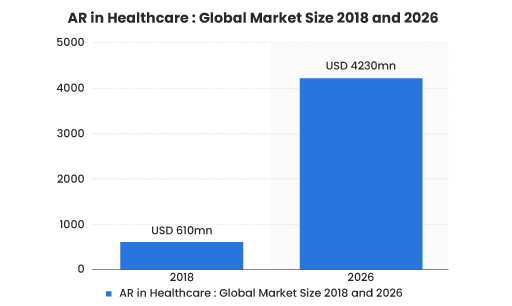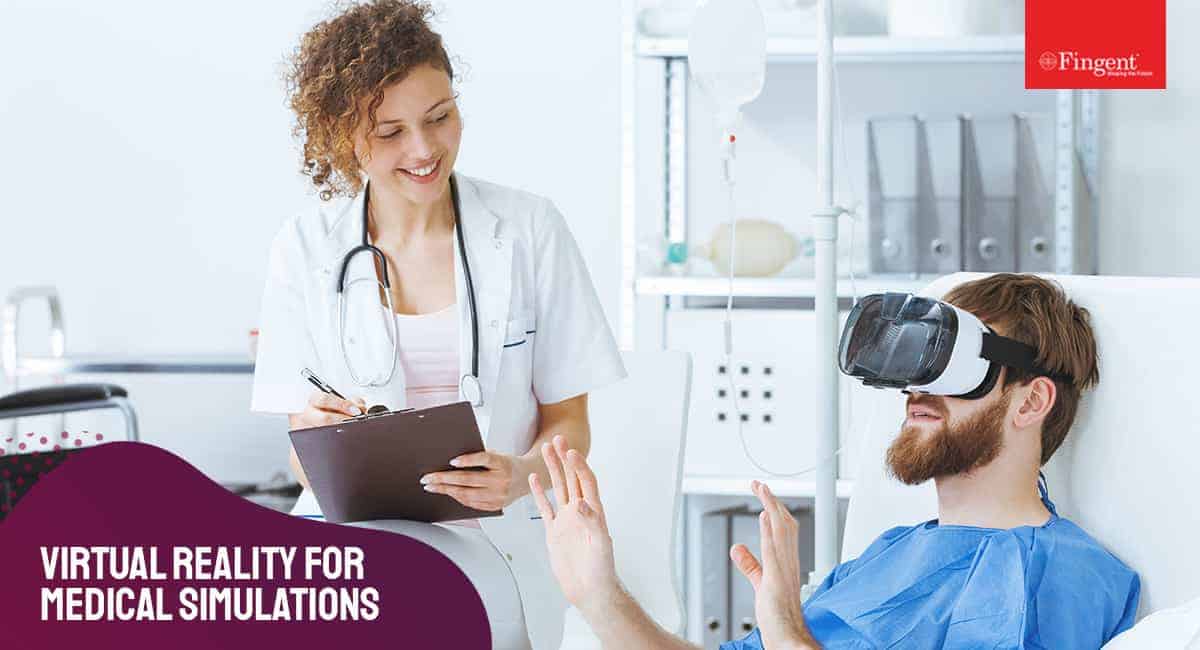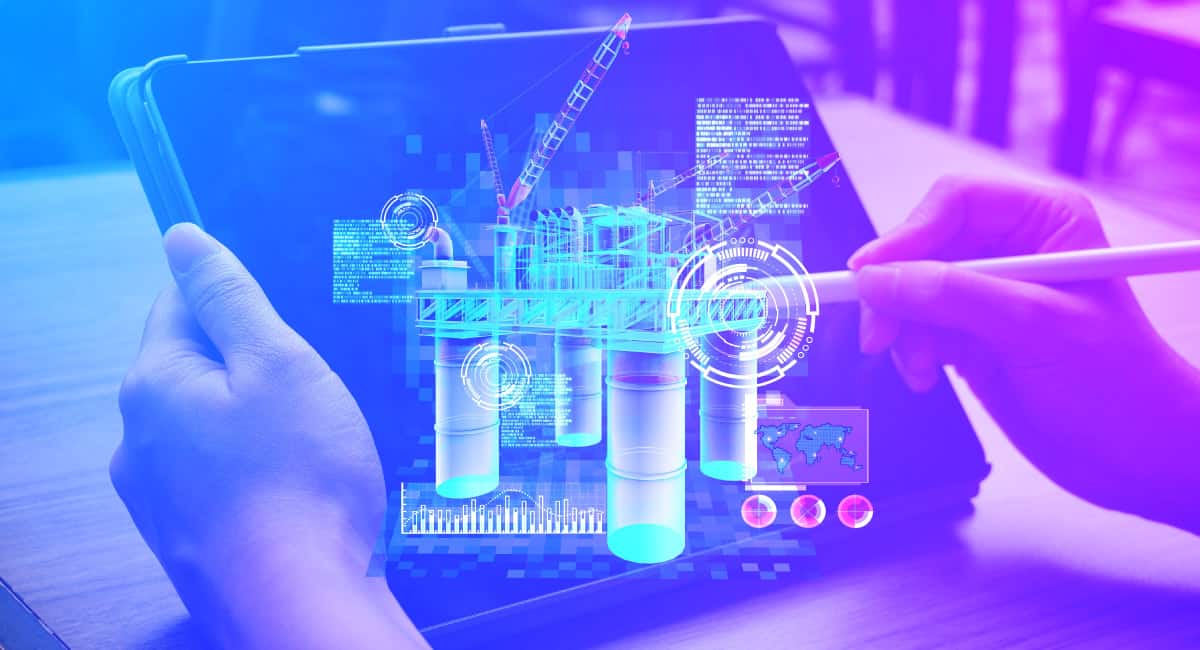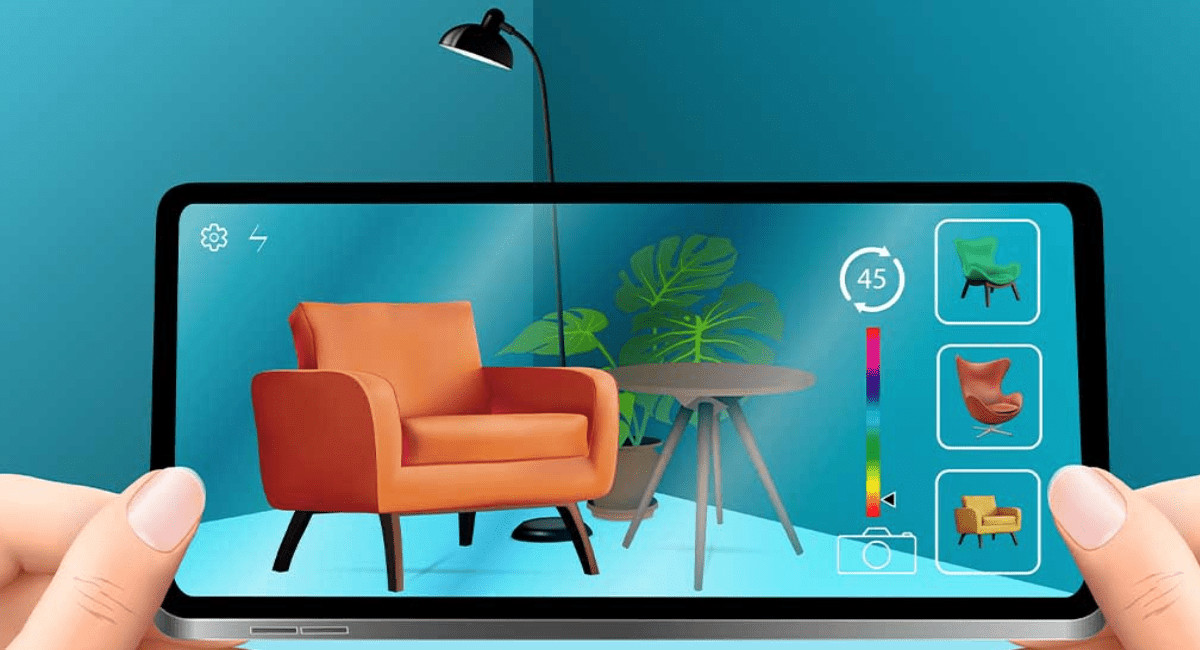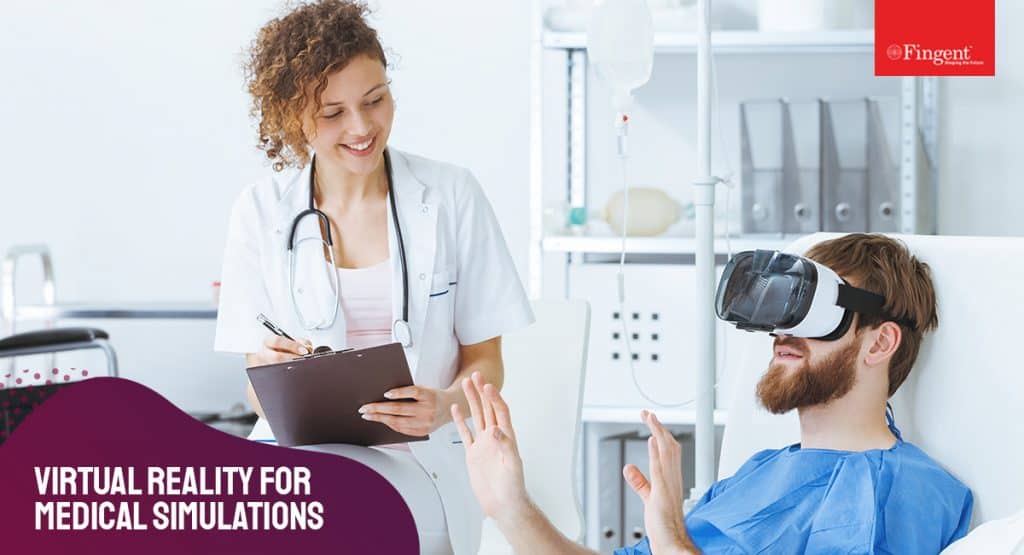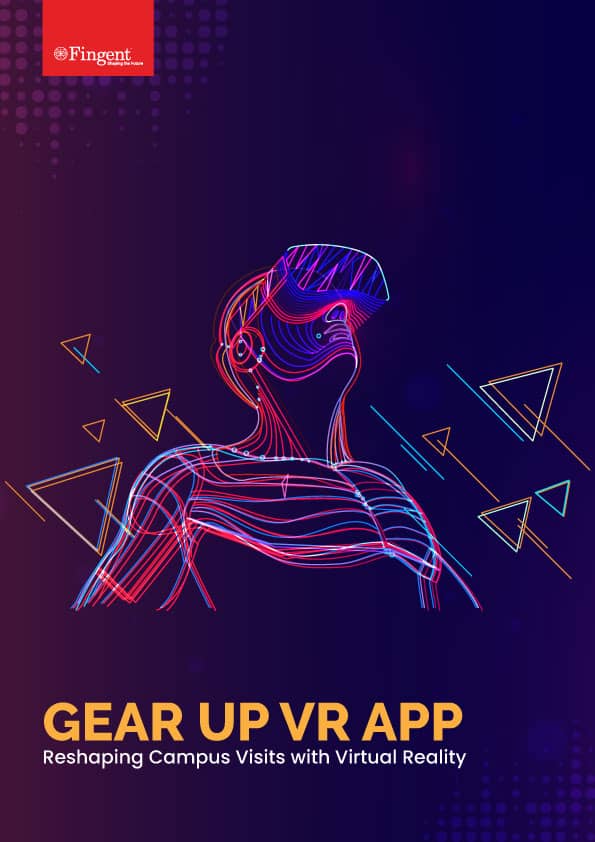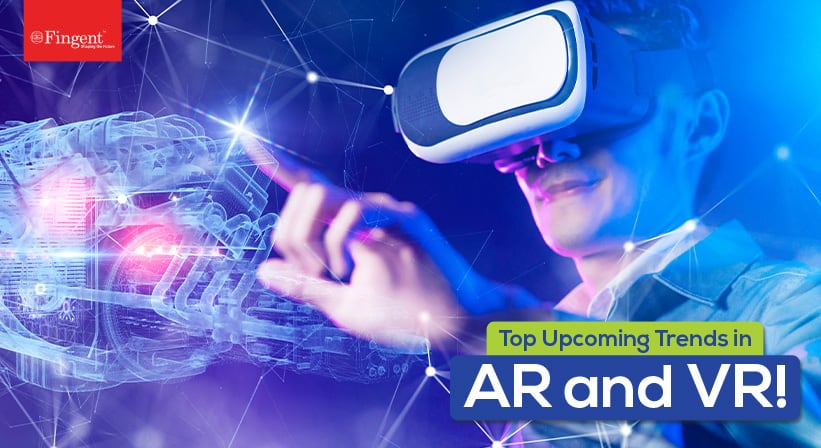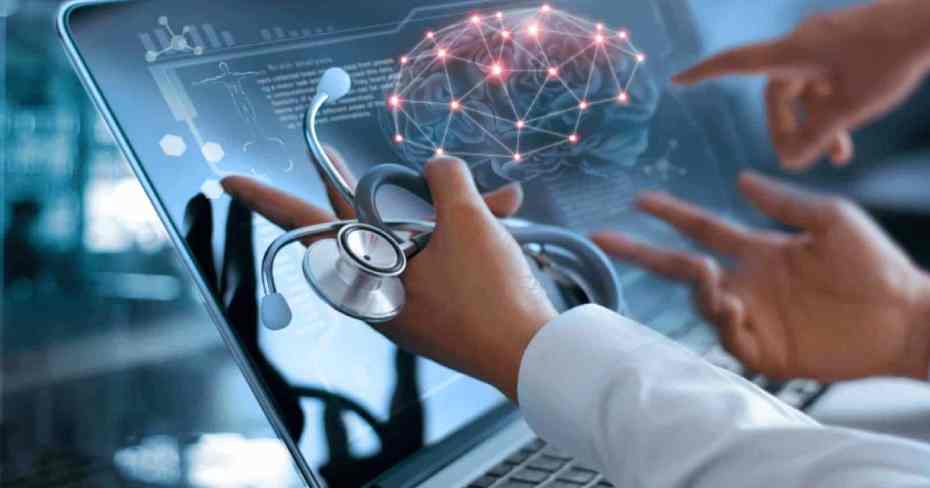Category: Healthcare
Have you wondered what the real cost of a 10-minute delay in a hospital is? Yes, time is lost. A missed diagnosis. A delayed surgery. Yet, in too many hospitals, critical data is locked in silos. Systems don’t talk. Teams improvise. And even the most skilled professionals are left navigating blind spots. That’s exactly where SAP for Healthcare steps in—and rewrites the playbook.
Across the globe, healthcare leaders are turning to SAP healthcare solutions. Why? To bring structure to the chaos. Not just to digitize paper records (that’s the bare minimum), but to build an intelligent, connected ecosystem—from patient intake to discharge, from inventory to incident response.
Because in a truly modern healthcare system, technology doesn’t just assist—it amplifies care.
How Can SAP Improve Healthcare Operations?
Modern healthcare isn’t just about treating symptoms—it’s about seeing the person behind the patient, responding in real time, and keeping every cog in the care machine running with precision. That’s the edge SAP for Healthcare delivers.
Here’s the problem: hospitals today are swimming in data—lab results, patient histories, insurance claims, rosters, inventory logs—you name it. But too often, data is disconnected. Underused. And when systems don’t speak to each other, care teams are left translating chaos instead of focusing on care.
SAP healthcare solutions flip that script.
Where others drown in data, SAP builds a single source of truth that actually talks. What does it mean in practice? Fewer delays. Fewer errors. Decisions made on the spot—with confidence.
And here’s the important fact: when the backend is truly streamlined, the frontline gets more human. No more treating patients like numbers in a queue. With SAP, care teams finally have the time, insight, and tools to treat people like people.
Power Your Business to Do More With Modern SAP Solutions
How Does SAP Improve Healthcare Operations?
What used to bog hospitals down? Disconnected systems, reactive decisions, and endless paperwork. Here’s how SAP in healthcare industry is helping providers:
1. Unified Patient Data Across Departments
Silos don’t belong in healthcare. Yet in many hospitals, radiology can’t see billing, pharmacy has no clue about OR schedules, and frontline doctors are left guessing. SAP fixes this. One hub. One truth. No chasing reports. No duplicate tests. Just one shared version of the truth.
The result? Faster diagnoses. Smoother workflows. And a patient experience that feels like everyone’s actually on the same team.
2. Smarter Resource Allocation
Running a hospital is like managing a mini city—beds, PPE, oxygen, nursing shifts, and a hundred moving parts. Here, SAP’s predictive analytics forecasts demand and flags shortages early. It allocates what’s needed, where it’s needed—before the crisis hits.
This isn’t just about trimming costs. It’s about saving lives by staying one step ahead.
3. Real-Time Decision Support
What if your hospital dashboard could whisper, “Check Room 6—this patient’s vitals are trending wrong”?
This is achievable through tools such as SAP S/4HANA and SAP Health Engagement. They reveal trends and obstacles instantly by merging experience data (X-data) with operational data (O-data).
The result? Clinical decisions that aren’t just faster—but better informed.
4. Automation of Routine Tasks
Processing insurance claims. Managing medication inventory. Generating discharge summaries.
These aren’t tasks that should eat up a nurse’s shift. With SAP, they don’t. On both sides of the bed, a better experience is also achieved through quicker billing, fewer human errors, and more seamless discharges.
5. Compliance and Security
Healthcare has rules—lots of them. HIPAA. GDPR. Local laws. Patient consent. Data storage protocols.
Compliance headaches? Cured. SAP healthcare solutions automate the paperwork and armor your data, leaving auditors with nothing to chew on.
Real-Time Visibility That Saves Lives (and Budgets)
Because in healthcare, lag kills. Ten minutes can ripple into catastrophe. SAP S/4HANA + SAP Analytics Cloud gives leaders X-ray vision into bottlenecks and staff shortages—letting them hit “solve” before a crisis blooms.
And this isn’t theoretical. It’s happening now:
Charité Berlin: Unified Clinical Data Access
- The move: Combined clinical systems—labs, imaging, and research—into one platform powered by SAP HANA.
- The result: Clinicians and researchers can now access complete patient records in seconds. This speeds up diagnostics. This enables progress like molecular tumor boards as well as whole-genome sequencing for identifying rare diseases.
Heidelberg University Hospital (Germany) – Management in Real-Time
- The move: Applied a cloud-oriented system by employing SAP Analytics Cloud. And SAP BTP to monitor ICU beds, personnel, ventilators, and PPE throughout 25 clinics and 45 wards during COVID-19.
- The result: They were able to gain precise, real-time insights. This helped route ambulances efficiently, optimize resources, and maintain control during peak crisis.
This isn’t theory—it’s lives saved through visibility. It shows how SAP tools empower healthcare leaders to react in hours, not days.
Dabur India Ltd.: E-Way Bill Generation Solution
- The move: Fingent integrated a SAP ECC-based e-way bill system based on SAP ECC.
- The result: The entire cycle of e-way bill generation was streamlined. Enabled automated bill generation, transfer authentication, and automated processes to stay compliant with regulations.
The Future of SAP in Healthcare
Healthcare is no longer about reactive treatment—it’s about proactive, connected, intelligent care. And SAP for Healthcare isn’t just part of that future—it’s shaping it.
Four ways SAP is reshaping healthcare:
1. Predictive, Preventive, Personalized Care
With SAP HANA and SAP BTP, providers tap into real-time data. It includes wearables, genomics, and lifestyle patterns to shift from reactive to predictive care.
Heart failure flagged early? Check.
Tailored cancer treatments based on genetics? Already happening.
2. AI-Powered Decision Support
AI isn’t coming—it’s embedded. SAP S/4HANA and SAP Analytics Cloud offer immediate notifications. They also propose treatment options and optimize workflows without hindering clinicians
3. End-to-End Patient Experience
Today’s patients want more than care. They want to feel seen. Empathy, clarity, and smooth communication are some of the most important aspects to them. With SAP Qualtrics and SAP Customer Data Cloud, you can tailor every step. Be it check-in or post-discharge. It does this using real-time emotional and behavioral feedback.
4. Healthcare-Grade Supply Chains
Fake meds. Fragile logistics. Narrow delivery windows. With SAP ATTP, hospitals trace, verify, and track every pharmaceutical unit—from lab to pharmacy shelf. It’s precision at scale, built for a high-stakes supply chain
Trying to Figure Out the Right SAP Solution for Your Business? Our SAP Experts Can Help You Analyze & Identify Apt Solutions
How Fingent Helps You Lead That Future
We’re not just SAP experts—we’re SAP Silver Partners with a deep bench in healthcare transformation. That means we speak fluent compliance and clinical operations.
Here’s what Fingent, as a partner, will assist you with:
Tailored SAP Strategy: We build roadmaps that meet your exact operational and care delivery goals.
Custom Integrations: From HIS and LIS to ERPs and mHealth apps—we make SAP talk to your tech stack.
Scalable Implementations: We can help you scale what you need from regional clinics to national networks.
Compliance by Design: We ensure to consider HIPAA, GDPR, and local laws from day one.
Post-Go-Live Support: Launch is just the beginning. It’s the handoff to smarter, ongoing improvement.
With SAP as your engine and Fingent as your guide, healthcare’s digital future isn’t just possible—it’s already in motion.
Stay up to date on what's new

Featured Blogs
Stay up to date on
what's new



Talk To Our Experts
Each moment in healthcare has the power to define the delicate balance between vitality and vulnerability in life. What if healthcare professionals used each of those moments to focus on patient treatment without being bogged down by administrative tasks? Picture the endless potential in that possibility! This is the commitment of automation in healthcare. It is a crucial and game-changing power that is altering the medical care scene.
Through this blog, we aim to give you insight into the exceptional benefits of healthcare automation. Let us begin by answering the question of what it means to use healthcare automation.
Improve Healthcare Outcomes With Automation Access Best In Class Domain Expertise & Technology Solutions
What is Healthcare Automation?
In simple terms, automation in healthcare involves the use of technology to perform tasks that were previously carried out manually. Wait, do not imagine robotic devices taking over the role of human compassion.
It’s exactly the opposite!
Consider automation as the quiet assistant—one that efficiently handles monotonous duties and allows medical professionals to dedicate themselves to their primary purpose: tending to patients.
Automation also allows for deeper insights and smarter decision-making. Real-time access to data is a miracle worker in this regard. It allows healthcare professionals to monitor patient outcomes, anticipate resource needs, and predict patient trends. This proactive approach is helping healthcare institutions minimize inefficiencies and elevate their quality of service. Far beyond merely handling routine tasks, healthcare automation is becoming a strategic asset—an asset that empowers hospitals and clinics to deliver quicker, more personalized care—care rooted in accurate, data-driven decisions.
Benefits of Automation in Healthcare: Going Beyond the Fundamentals
Indeed, automation saves time and decreases human error. However, let’s delve further. What are the enduring effects of automation in the healthcare industry?
1. Patients Enjoy Control and Authority
Automation provides patients with autonomy. They can easily handle appointments, review lab results, or monitor insurance claims, without the hassle of waiting in lengthy lines.
2. Better Mental Health for Staff
Picture nurses and doctors buried under endless piles of paperwork. Imagine the stress disappearing as automation handles those non-clinical duties. Reducing burnout allows healthcare workers to prioritize meaningful patient engagements.
3. Smart Resource Allocation
Automation guarantees hospital resources, including beds and operating rooms. Consider it the healthcare equivalent of a Swiss army knife. It simplifies processes and cuts down on waiting periods while maintaining high-quality care.
4. Decisions Based on Data
Automation provides immediate access to crucial information for healthcare professionals. It aids in making prompt and intelligent decisions, such as monitoring hospital efficiency and tracking patient outcomes.
5. Connecting Humans- Automation in Healthcare Increases Compassion
The emotional consequences of healthcare automation are frequently ignored in discussions. For patients, some advantages go beyond just receiving quicker test results or more efficient billing processes. It’s about feeling at ease, knowing their healthcare provider has the time and energy to provide personalized care.
How Automation Is Transforming the Healthcare Industry: Application Scenarios
Automation impacts every aspect of the healthcare system, from patient care to the complex logistics in the background. Here’s an overview of its impact.
Treatment and Diagnosis are Being Automated More and More
Artificial Intelligence (AI) and machine learning are speeding the diagnosis process and customizing treatment plans. AI can examine medical tests more quickly than humans can, which assists doctors in the early and accurate diagnosis of conditions. AI is a super sleuth, diagnosing and unraveling problems proactively before any symptoms manifest.
Automated Appointment Booking
You don’t have to waste time waiting to book appointments anymore. Automation empowers patients to make online appointments, reschedule, or cancel. It provides control and decreases administrative tasks for the staff. It’s similar to self-checkout but for health services.
Read more: Healthcare Technology and Mobile Apps – Changing the Face of Patient Care
Logistics and Supply Chain
Automating supply management in hospitals helps avoid crucial shortages. Automation ensures that everything operates efficiently in the background.
Automating Administrative Processes
Administration is one of the primary applications of robotic process automation in the healthcare industry. Automation has the potential to decrease missed appointments, enhance the precision of billing, and expedite the processing of claims.
Robotic Process Automation in Healthcare
Robotic procedures enable increased accuracy, reduced incision size, and quicker healing periods. This ensures exceptional precision and security.
AI In Healthcare: Enhancing Patient Outcomes & Experiences
Insight into the Future of Automation in Healthcare
What is in store for the future? The full potential of automation in healthcare is only starting to emerge. Forecasting outbreaks, managing hospital capacity, and preventing diseases can be supported by predictive analytics using patient data trends. Picture a system that alerts doctors to potential issues before they occur. This isn’t fiction, it’s the upcoming evolution of healthcare.
We are also progressing towards completely automated telemedicine platforms. A scenario where physicians can remotely care for patients by utilizing live data from wearable devices. The benefits of implementing automation will enable individualized care worldwide.
Frequently Asked Questions (FAQs)
1. What is the direct impact of automation on patient care?
Healthcare automation is like having a super-efficient assistant that speeds up processes, reduces errors, and leaves patients happier.
2. Which is better – robotic process automation in healthcare versus AI in healthcare?
Robotic process automation is like your trusty assistant handling the boring stuff, while AI is the genius of making personalized treatment plans and diagnosing like an expert. It’s like a dynamic duo taking on healthcare one task at a time.
3. Is automation going to take over healthcare jobs?
No. Automation in medicine & healthcare improves job functions by removing monotonous duties.
4. What are the financial consequences of implementing automation for healthcare providers?
The initial financial commitment may seem expensive. However, in the long run, automation leads to overall cost reduction. It can also substantially decrease mistakes, hasten reimbursements, and improve patient results.
Making the Best of Automation in Healthcare With Assistance From Fingent
At Fingent, we understand the distinct requirements of each healthcare institution. If you want to use robotic process automation in medicine and healthcare or investigate AI-powered diagnostics, we offer customized solutions to match your objectives. Our solution for NovitaCare is a case in point. The client’s need for an online platform that would streamline workflow and ease administration processes was met on point by Fingent’s solution.
Our method guarantees that automation in the healthcare sector goes beyond technology. The main goals are to enhance patient care, boost productivity, and restore empathy to the sector. Let us help you transform your processes using advanced automation solutions.
Reach out today, and let’s build the future of healthcare together.
Stay up to date on what's new

Featured Blogs
Stay up to date on
what's new



Talk To Our Experts
There was a time when sifting through piles of paper-based medical records was an everyday task for healthcare professionals. Today, however, healthcare technology has simplified processes, making them more effective, streamlined, and accessible. Mobile applications, in particular, are equipping both healthcare professionals and patients equally to connect effectively and execute better treatments and facilities. From telemedicine to remote monitoring, instant diagnosis, and easy access to patient data, healthcare technology and mobile apps are paving the way for revolutionized patient care and healthcare services. What does the future of healthcare technology look like, and how much is it impacting the domain now? Find all that and more in this 3-minute read!
Build Custom Healthcare Technology Solutions That Caters To Your Unique Challenges & Boosts Patientcare Services.
What Is Mobile Healthcare Technology?
Healthcare mobile applications include any applications related to ensuring people’s health and wellness. These apps can be built to serve different purposes. The most popular of them are fitness apps, which again might be categorized with functionalities that are subjected to exercises, weight, or diet management. Almost 3 in 10 adults report using at least one health app on their smartphone.
Medical applications built for hospitals, on the other hand, ease booking consultations and simplify doctor-patient collaboration. Medical applications can also be specifically designed for clinical and medical purposes. These equip healthcare professionals to access the right data, diagnose faster, track health conditions in real time, and provide personalized healthcare services.
Custom healthcare software development whereas, is the process of creating a progressive application that caters to the specific needs of an organization. There are two key factors that determine this development:
- For healthcare professionals to check and track their patients’ health. It can also include managing staff administration, appointment scheduling, etc.
- Patients can use the app to manage their health. They can also receive medical advice and book appointments.
Studies show that investors’ funding in the digital health industry amounted to almost 45 billion U.S. dollars in 2021! Clearly, the market for healthcare mobile apps has shown much growth and opportunity.
Why Mobile Applications Are Important in Healthcare?
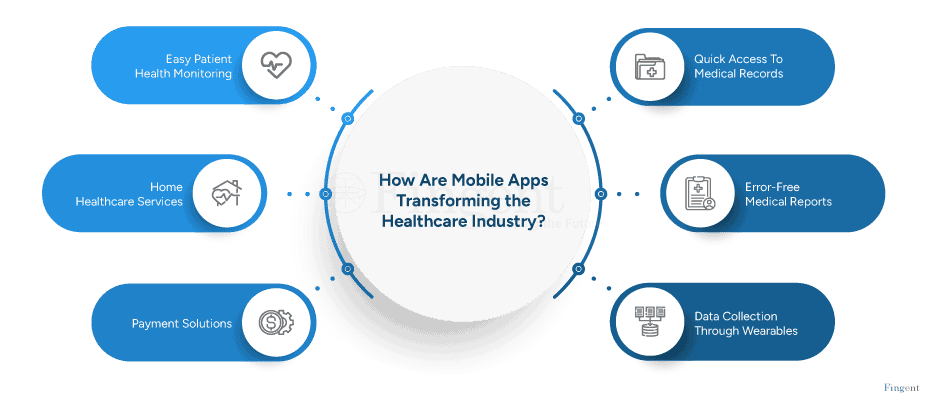
The healthcare industry has seen many benefits thanks to healthcare technology and mobile apps, from emergency responses to treatment monitoring and direct communication with diagnosed patients. These apps can provide many tools to assist the hospital and patients. They also help improve efficiency in emergency management by alerting first responders automatically. These applications can optimize even the administration department of a healthcare center. They assist with tasks like record maintenance, documentation, clinical decision-making, and information management. Listed below are some of the revolutionized aspects of healthcare:
1. Health Monitoring of Patients
Patients can monitor their health through fitness bands and wearables, which connect to their smartphones and tablets. These can help track daily activities such as walking, sleep patterns, and dietary habits. This development has shifted the world of healthcare professionals and patients. It automates tasks like record maintenance and provides real-time access to health records.
Read more: Information Technology in Healthcare: Applications and Role
2. Home Healthcare Services
These services can calculate medication intake, monitor medical equipment, and meet other requirements. With these applications, patients can choose to receive at-home care in real-time. This is vital for patients with special needs who can’t regularly visit hospitals. These patients can range from senior citizens to people with mental and physical disabilities.
3. Payment Solutions
The development of medical applications has facilitated seamless payment processes. Patients can make bill payments without waiting for hours in the medical institute. With optimized payment solutions, they can safely make payments in an instant.
4. Medical Records
This is another widespread transformation medical apps bring to the healthcare industry. With these apps, doctors and patients can maintain medical records on the cloud. Here, they are not at risk of being misplaced or corrupted. Recording medical reports also helps doctors make quick medical decisions during emergencies.
5. Medical Reports
Healthcare professionals need to be accurate in what they do. Any errors made by them can cost lives. Medical errors mostly occur in diagnosis or oversight of previous medical reports. Fortunately, these instances have decreased since the integration of technology in healthcare, such as artificial intelligence for diagnosis. AI, such as machine learning and data analytics, provide accurate reports that support doctors in treatment. Quick access to patient reports on mobile devices also helps save time and make timely and accurate decisions.
6. Data Collection Through Wearables
Wearables such as pedometers can be integrated with mobile app development. This can help them track and automatically record health-based data in real-time. These apps will gather daily patient health data from their wearables and store it in a dataset. Later, this dataset can be used to track health progression or regression.
What Are the Benefits of Mobile Devices in Healthcare?
Medical app development can benefit both the hospital and patients. The advantages are innumerable. Listed below are some of the advantages that hospitals and patients gain.
For Healthcare Professionals:
1. Efficient Patient Management
Medical apps can provide real-time updates and notifications to medical staff. This will ensure that they cater to patient needs with accuracy. It also reduces the time spent waiting for updates. Patient data can be uploaded to the software cloud in real time. It can be accessed by any medical professional from here. This centralized access to patients helps professionals make quick decisions. All these features enhance the efficiency of the organization.
2. Time-saving Communication
In the field of medicine, communication is life-altering. Healthcare professionals’ collaboration and coordination must be flawless. Mobile apps allow professionals to communicate with each other. This way, they can share critical patient information. Electronic health records (EHR) systems also provide secure messaging chatrooms. Here, patients can confide in medical staff without fear of privacy breaches. These systems also help staff access patient data from mobile devices. Any changes in patient status will be altered for stakeholders through these apps. This ensures that treatment plans, administrative tasks, and crucial decision-making are prompt and cohesive.
3. Reduced Costs
Streamlining processes with the help of healthcare technology cuts down operational costs. It eliminates the need and risks of manual labor. Thus, optimizing resource use leads to cost efficacy. Some other financial benefits are reduced labor costs and administrative expenses. Accurate diagnosis with mobile application AI can also save organizations from costly lawsuits. They also optimize resource allocation and identify cost-saving opportunities.
4. Streamline Administrative Tasks
An integral benefit of mobile apps in healthcare is the streamlining of tasks. Through digital documentation, they mitigate the risk of errors in manual data entry. These applications can automate various mundane tasks and optimize them. From scheduling appointments to accessing previous medical records, these apps improve operational efficiency.
5. Cut Risk of Misdiagnosis
This is the most important benefit of mobile apps in healthcare. Data Analytics helps healthcare professionals evade the risk of misdiagnosis. Health apps can also nullify any challenges leading to inadequacy in treatment. These apps can store and retrieve reports of patient’s health conditions in real time. This ensures that doctors prescribe accurate medicines and treatment options.
For Patients:
1. Access to Medical Records
Patients like to be kept in the loop about their treatment. Medical apps allow them to access and understand their diagnosis. They can feel proactive and in charge through educational videos and health articles. These applications also provide interactive features like virtual tours, which help reduce anxiety and enhance patient comfort.
2. Remote Consultations
A well-appreciated feature of mobile apps is their remote consultation feature. This feature allows users to consult doctors at any time from anywhere and view medical records from their online consultations at home, promoting accessibility and convenience.
3. Health Monitoring and Lifestyle Tips
Mobile applications can be connected with wearables and gadgets to track health conditions. These apps can alert the user when there are fluctuations. They can also schedule appointments and connect to care providers hassle-free. Some mobile applications also provide educational tips for improving lifestyle. Patients can also access chatbots that will answer their questions for minor issues. This adds another layer of efficiency to mobile apps.
4. Easy Appointment Management
Scheduling appointments is a hectic process. Some people avoid visiting the hospital due to this hassle. Medical mobile apps mitigate this challenge. With its digital support, anyone can connect to many doctors and book appointments. They can also browse the professional’s profile and add filters for personalization. For regular patients, they can add a feature to update their appointments consistently. The app further optimizes communication and sends appointment reminders. They also provide options to cancel or reschedule appointments with ease.
5. Hassle-free Payment
Through secure payment portals, patients can make quick transactions. This way, they are saved from waiting in long lines for hours to make one payment. The payment systems also guarantee security and confidentiality. Users can also personalize payment methods, pay online, and contact insurers.
How Is AI In Healthcare Enhancing Patient Outcomes and Experience?
What Is The Future of Mobile Health Apps?
As mentioned earlier, healthcare technology and mobile apps will continue to progress with technology. This is one of the rare certainties of the world. Recently, Grand View Research conducted a study to determine the growth of technology in healthcare. They concluded that by 2030, the mHealth apps market size will grow at a CAGR of 17.7% to reach $86 million.
Artificial intelligence has already been incorporated into healthcare industries to solve various challenges. This collaboration is expected to grow further with the advancement of AI-driven applications. These apps can analyze data for early detection and provide virtual assistance. With this integration, the possibilities of healthcare app development are endless.
How Can Fingent Help Build and Find Opportunities with Healthcare Apps?
At Fingent, we build applications with intricate customization. Our healthcare clients have found operational efficiency, ease of collaboration, and process automation with our tailored healthcare technology solutions. One such example is our collaboration with NovitaCare, an early-stage healthcare startup in the US. The client wanted to improve engagement with their stakeholders and create better patient outcomes. We helped them develop a Healthcare Service Platform for their clientele that eased administration, optimized workflows, and streamlined HIPPA compliance.
Another example is the invoice and expense claim management system that we designed for MundiPharma, a leading pharmaceutical company with over 50 years of experience in the field. The application helped them streamline the payment process, issue invoices, and maintain operational transparency with intuitive dashboards.
Our professionals integrate emerging technologies to offer the best service. With our experts always having their finger on the pulse of technological developments, you can always stay one step ahead of the competition. With innovation backing your healthcare goals, we can pave your path to achieve excellence.
Connect with our experts today and discover innovative opportunities for your healthcare organization.
Stay up to date on what's new

Featured Blogs
Stay up to date on
what's new



Talk To Our Experts
Over the years, the healthcare industry has tremendously evolved. It’s almost like the epitome of technological advancements! In the year 2020, the global medical technology market was valued at $456.9 billion and now is projected to reach $695.5 billion by 2027. From improving healthcare treatments to patient care and diagnosis, healthcare has leveraged every advancing digital capability to enhance itself. Now, the industry is on to transforming its training methods with Virtual Reality (VR). How is VR in medical training promising boosted performance and enhanced medical skills? Is VR turning the future of medical training? Let’s find out in this 3-minute read!
What Are Some Common Medical Training Challenges?
Medical training is critical and imposes challenges that go beyond lecture halls. The sheer volume of healthcare professionals, the need to grasp knowledge within a limited time, and the logistics of it all are challenging, to say the least. It has a direct impact on the quality and effectiveness of future healthcare. Here’s a look at the top roadblocks in medical training that need to be addressed urgently.
1. Balancing Quality With Quantity
Every reputed healthcare organization ensures regular and effective training for all its professionals. However, when the learners are large, it is often challenging to manage the training and provide personalized experiences. Neither can enough equipment be provided to all students nor can training effectiveness be compromised. This dilemma, if not resolved, can lead to underskilled medical professionals.
2. Logistical Constraints
There are many logistical hurdles that healthcare institutes must juggle. These range from coordination of healthcare facilities to scheduling lessons. Preparing interactive lesson plans and prepping room practice are some other logistical challenges. The complexity of these challenges hinders institutions from upscaling their programs.
3. Adapting to Technological Advancements
New advancements are popping up every day in the world of healthcare. Sometimes, adapting to these changes can be challenging. Institutions must constantly update their programs. They must provide healthcare professionals with the most current resources and expertise. Despite new technologies having a positive impact, they can be difficult to install and implement.
4. Forward-thinking Strategies
Grasping complex medical concepts in less time can be challenging. This calls for the implementation of novel strategies and curriculum models. These models should cater to the evolving landscape of healthcare. They should also support the next generation of e-learners. Institutions have to equip themselves to guide the new generation. A generation that will demand a dynamic and immersive learning experience.
How Does VR Advance Traditional Medical Training?
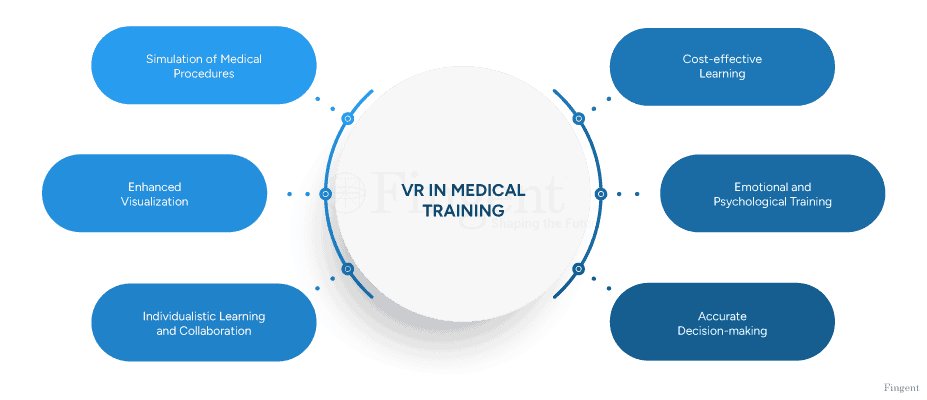
VR in medical training discards traditional learning methods. Creating simulations similar to real-life scenarios equips learners to respond quickly and accurately to emergencies. Also, allowing learners to replay the same situation often helps perfect medical procedures. It builds muscle memory and unparalleled confidence when faced with real-life situations. Here are some ways VR contributes to medical training:
1. Simulation of Medical Procedures
Virtual reality for medical training allows professionals to practice complex procedures in an immersive virtual environment. These situations are replicated with high fidelity, providing a safe learning space. Learners can refine their skills and discover new ways to address problems—all this without risking patient safety.
2. Enhanced Visualization
With VR, students can view complicated medical concepts and anatomical structures in 3D. This enhances their learning experience. It also allows them to explore the human body from various angles and perspectives.
3. Individualistic Learning and Collaboration
VR allows for remote participation. Here, every learner has the opportunity to have hands-on experience. They can collaborate or even learn as a group through VR projections. Learners from different geographical locations can join the same virtual space. Thus helping them learn and practice. VR also allows instructors to supervise learners in real-time. VR training builds teamwork and collective learning.
4. Cost-effective Learning
Setting up and managing VR systems can be cost-effective in the long run. Traditional methods need a lot of facilities that are not friendly to the pocket. Cost-effectiveness can make training more accessible to a wide range of medical students.
5. Emotional and Psychological Training
Virtual reality for medical training can eliminate high-stress situations. It will help students practice under pressure. Traditional settings cannot create these situations accurately. They also help learners practice the management of emotions. It helps them deal with the psychological implications of patient care.
6. Accurate Decision-making
One of the most important skills of a medical professional is accurate decision-making. This ability is not inborn; it is learned through practice. VR scenarios can create ethical dilemmas. This allows trainees to explore different outcomes based on their decisions. This helps sharpen their critical thinking and ethical decision-making skills.
Can VR Supercharge Training and Ease Technology Adoption in Healthcare?
What are the Benefits of VR in Medical Training?
Virtual Reality creates radical stimulating experiences that can be manipulated to practice scenarios or duplicate situations. These simulations can be accessed through virtual headsets and controllers to enable more immersive and engaging training. Headsets equipped with VR glasses and headphones boost these experiences, making them more seamless and effective. Pairing with hand controllers helps duplicate movements that enable trainers to practice surgical procedures or complex medical emergencies.
Read more: How Virtual Reality Improves the Standards of Medical Education and Training
The benefits of adopting VR in medical training are innumerable. Here’s a run-down of a few.
1. Reduced Training Costs
Medical training costs are often difficult to assess. The price of implementing simulating systems varies. Regardless, VR works at a reduced cost with fewer resources. Traditional healthcare training requires the involvement of expensive equipment, such as high-fidelity mannequins. VR eradicates the need for such expensive equipment. Furthermore, VR training can occur anywhere and at any time. This removes the expense of travel and accommodation. VR-based medical training can reduce costs without disturbing the quality of education.
A research paper published in the National Library of Medicine makes a valid point: “The larger initial investment in virtual reality can be spread across a large number of trainees and a longer time period with little additional cost, while each live drill requires additional costs that scale with the number of participants.”
2. Increased Training Efficiency
Learning is best established when it is done at one’s own pace. This applies more to medical training. VR allows trainees to practice at their own pace and use whatever materials they need. The ability to repeat training sessions helps learners perfect their lessons. Repetitive VR simulations can enable learners to refine their skills. This, in turn, builds muscle memory and confidence.
3. Enhanced Learning Experience
Virtual reality is known for its ability to offer an immersive experience. Pairing this with healthcare training can create wonders. It will produce an interactive learning experience that engages many senses. This refines muscle memory and makes it easier to absorb and retain knowledge. Virtual reality bridges the gap between theory and application. It leads to a perfect understanding of complicated medical procedures and concepts.
4. Research
Virtual reality has been a game changer in medical research. With this technology, it is easy to experiment and discover new surgical procedures. Many institutions are using virtual reality to study the brain in detail. A study has found that VR is more effective than traditional MRI scans.
5. VR Scenarios
Repetitive virtual reality simulators allow trainees to make mistakes. It also allows users to learn through repeated practices to perfect their performance. This is generally noted as the central feature of virtual reality in medical training. Traditional methods cannot compete with this benefit. They consume too much space, time, and faculty requirements.
6. Easy to Set Up
The entire virtual reality set-up can be accommodated in a space as small as 2 x 2 meters in under 5 minutes. This simplicity allows other simulation activities to take place in the same center. VR-based training also allows senior faculty to focus on other important tasks while students train. Virtual reality also adds the element of gamification. This makes the entire learning process more fun and autonomous.
VR in Medical Training: Some Interesting Use Cases
Research&Markets, a research firm, noted that the VR market would witness a 22.5 percent compound annual growth rate from 2023–27. Many medical institutions have jumped on the bandwagon already.
1. VR Surgical Training
VR simulations can help create complicated scenarios, giving professionals the right practice to drive surgical efficiency. Here’s a quick display of how VR can promote seamless training simulations. It helps develop the appropriate motor skills required for surgery, creating a realistic environment for the residents to practice. A key advantage of such a system is that it also allows educators to supervise the learner’s actions. They can connect to the VR glasses through a laptop device and offer real-time feedback.
2. Nursing Perfected at Johns Hopkins
Johns Hopkins School of Nursing has implemented virtual reality training at all levels. Professionals use VR-based equipment to learn subjects ranging from surgical procedures to nursing practices. Their areas of focus for training range from resuscitation to post-surgical management. The simple VR set-up consists of an Oculus headset and an Alienware computer. The virtual reality configuration also includes hand controllers, which assist in making cognitive decision-making more effective.
3. Real-time feedback at the University of Northampton
The University of Northampton has taken a giant leap forward. They have installed four sets of VR hardware and a large screen in training rooms. These screens and VR hardware display a physical simulation of a hospital ward. The screen also projects what the students are doing in the virtual space. It provides space for educator feedback and group learning. Learners can also take turns leading the VR scenarios with real-time peer companies. This implementation ensures innovative educational structures. It also builds peer support and teamwork.
4. VR trolleys at the University of Oxford
The University of Oxford uses VR simulation to train residents in John Radcliffe Hospital. Instead of integrating VR in a confined simulation space, the faculty uses mobile VR trolleys to transport equipment. Peer learning is also a primary form of learning here. They have groups of ‘super-users’ who introduce VR systems to new students. Another prime feature is that no faculty is expected to take part unless they choose to review student progress.
How is VR for Medical Training Expected to Revolutionize the Healthcare Industry?
Virtual reality for medical training is expected to transform the healthcare industry through its unmatched training strategies. By creating realistic simulations for students to practice, VR enhances the entire learning process.
Recent research tracked that VR in student schedules for laparoscopic surgery has improved educational outcomes by 74%.
VR creates a safe space for trainees to learn from their mistakes. which in turn hones their skills without costly repercussions. This will improve clinical outcomes and patient safety. VR training also reduces costs associated with traditional methods by eliminating the need for expensive equipment. It allows all students to access specialized training and delivers high-quality education.
Aside from training, VR also assists with innovative research in the medical industry. It enables simulations of diseases, treatments, and clinical trials. Research students can examine diseases and develop cures with a more effective approach. It also removes the risk of actually experimenting on patients. VR enables researchers and scientists to find cures for innumerable diseases.
Virtual reality is ready to revolutionize the medical industry. Advancements in education and research will change the world. Research from the Harvard Business Review attests to this fact. The key finding was that participants trained with Osso VR, a VR training and assessment platform, showed improved performance – 230% better than traditional training methods.
Boost Your Brand Value With VR Powered Medical Training & Healthcare Solutions
How Can Your Organization Strategize VR Powered Medical Training Software?
Organizations that are ready to implement VR in medical training must have a sound strategy in place. Here are a few steps that will ensure successful implementation and seamless adoption.
1. Analyze Training Needs
The first step is to identify specific training needs within the organization. Understand which medical procedures, scenarios, or skills will most benefit from VR simulation. This will involve consulting with medical professionals and stakeholders. Sort priorities in terms of significant impact.
2. Select the Right VR Platform
It is important to choose the right VR platform that aligns with your organization’s goals. You should consider factors like flexibility and compatibility with existing systems. Test whether the selected platform can fabricate diverse medical scenarios. This step will ensure a smooth transition from legacy training methods.
3. Develop High-quality Content
Invest in developing high-quality VR content. This content should meet educational objectives and engage students. VR can make subject matter interesting, but designing that subject matter is in your hands. Collaborate with experts to ensure accuracy in simulations. Your content must allow students to practice skills, make decisions, and receive feedback in real-time.
4. Accessibility and Equity
Ensure that the VR training program you create is accessible to all learners. This should include those with disabilities or diverse learning needs. Address any potential hurdles, such as technical requirements or physical accommodations. This will promote effective training.
5. Track and Check Performance
Watch over your VR system and continuously check its performance. Collect feedback from users to identify areas for improvement and refinement. Use data analytics to assess student progress and skill acquisition.
6. Stay Updated With Technology
When you take a step into the realm of advanced technology, there is no backing out. Embrace its changes and stay up-to-date with its advancements. This will also help you upgrade your system according to medical education trends. Incorporate new features and updates into your VR training strategies. It will help to maintain relevance over time.
How Can Fingent Help?
At Fingent, we believe in enabling businesses to recognize opportunities. We also redefine traditional processes with emerging technologies. We offer simple-to-use and quick-to-implement software solutions. These solutions will empower your organization to think beyond basic digitization. We implement an agile method to create high-quality, reliable, and cost-effective solutions.
Our service comprises three main advantages:
- Results adhering to deadlines: We offer transparent project management with warranty-assured deliverables. We also create well-defined project plans that can handle any unexpected challenges.
- Budget-friendly solutions: With Fingent, there are no last-minute surprises. We provide efficient operations with the best coding practices and 24/7 tech support.
- Advanced technological expertise: Nothing says reliability better than expertise. With Fingent, you will experience easy implementation and best practices. We have top-notch developers who offer the best advice on new-age technologies.
VR in medical training is the future! Call us, and let us show you how we can use our expertise to create impactful VR solutions for your organization.
Stay up to date on what's new

Featured Blogs
Stay up to date on
what's new



Talk To Our Experts
Artificial Intelligence is a multi-talented assistant and has proven its worth in the healthcare industry. Healthcare organizations have found innumerable ways to use AI, from record maintenance to patient assistance. It has completely reshaped how doctors diagnose, treat, and monitor their patients. It is also capable of drastically improving research methods, which leads to unmatched accuracy in diagnoses. By integrating AI into hospital settings and clinics, healthcare systems can potentially become smarter, faster, and more efficient worldwide. This blog will help you explore the immense possibilities of AI in healthcare!
How is AI Used in Healthcare?
Healthcare AI, valued at $11 billion in 2021, is expected to be worth $187 billion in 2030.
This massive increase will mean that we will continue to see exponential growth in how medical providers and organizations in the healthcare industry operate. So, how are they using this power tool? Here are some ways.
1. Easing Administrative Workflow
Artificial Intelligence can process and analyze extensive amounts of clinical documentation within a few minutes. This enables professionals to spot disease markers and trends that could be overlooked with manual analysis. AI can automate mundane tasks such as data entry, claim processing, and appointment scheduling, freeing up time to focus more on patient care and the management cycle. Artificial intelligence also eradicates the risk of human error by offering a faster way to analyze and review health records, medical imaging, and test results.
2. Disease Detection
Machine learning (ML) is an area of AI that reads patterns and allows a machine to learn and apply the learned experience to similar scenarios. It enables physicians, researchers, and patients to identify impending diseases. Researchers and practitioners claim that machine-learning-based disease diagnosis is inexpensive and time-efficient. Furthermore, a current study proves that these diagnoses have an accuracy rate of 90%. Diseases like dementia, heart failure, breast cancer, and pneumonia can be identified with ML. The emergence of this fascinating technology in the diagnosis domain illustrates the utility of AI in medical fields.
3. Automate Documentation, Store, and Organize Health Data
Documentation and organization processes are monotonous. They can be very tiresome and boring, leading to human errors. This process can be automated by Natural Language Processing (NLP), which interprets and uses human language to perform tasks. NLP can improve patient care with accurate diagnosis, streamlined clinical procedures, and customized services. It can also help analyze medical records and suggest improved treatment methods. The most common use of NLP in healthcare is to analyze and classify medical records.
4. Accelerate Drug Discovery and Development
AI assistance to the pharmaceutical industry can improve the overall life cycle of products and make great leaps in medical research. It can be integrated into various tasks, such as drug discovery, drug repurposing, clinical trials, and product management. This reduces the workload on human employees while simultaneously achieving targets in a short period of time. Artificial intelligence can identify hit-and-lead compounds in drug research. This allows it to provide quicker verification of the drug target and optimize the overall drug structure.
5. Medical Inventory Auditing
Inventory management is a strenuous task that requires close attention and constant supervision. However, when you integrate AI into inventory management, you can curate a seamless flow of products.
Computer vision can help in this regard. It is a type of AI that can analyze images and perform tasks that replicate human behavior. With computer vision, medical institutions can automate their auditing process and reduce errors in shipments of surgical supplies.
Artificial intelligence can also assist medical organizations with product evaluation, prioritizing inventory tasks, and allocating inventory information across the organization network. AI in the medical industry can also automate small tasks such as the transcription of bills and the recommendation of products based on a surgeon’s order history. Even this simple automation can bring overall accuracy to the functioning of inventory.
Virtual Reality is Reshaping the Future of Medical Device Training
6. Virtual Nursing Assistants
A virtual assistant is a manifestation of AI that provides 24/7 support and monitoring for patients. It consists of AI-driven chatbots that further enhance patient engagement and adherence to treatment schedules. The overall market for virtual healthcare assistants is growing at a CAFR of 30% from 2023 to 2033. This says it all!
Surgical robots are another brilliant invention powered by artificial intelligence. They can perform minor surgeries with a high level of proficiency. These robots can also collect patients’ previous medical records and make appropriate suggestions to surgeons. Medical researchers and scientists are now striving to create an AI robot fully capable of performing complex surgeries.
7. Personalized Fitness Coach
We have all encountered health and fitness monitors, such as smartwatches and apps that can track and analyze our medical histories. These monitors are also powered by artificial intelligence. They store real-time data sets, and they will alert the user when they recognize a suspicious pattern.
AI can also transform limited customer service into a highly scalable, personal service that provides multifaceted recommendations through real-time conversational AI. On a larger scale, AI solutions, such as data applications, ML algorithms, and deep learning algorithms, can also help healthcare professionals. They can analyze large amounts of data and offer suggestions before professionals make decisions.
8. Patient Prioritization System
According to a recent study, 83% of patients report poor communication as the worst part of their experience in healthcare centers. This illustrates the desperate need for a clearer form of communication between patients and healthcare service providers. AI technologies like natural language processing, predictive analytics, and speech recognition can monumentally bridge this gap.
Clinical AI is also created to focus specifically on patient care. It uses various subtypes of AI to improve patient treatment. Predictive analytics is another helpful area of AI. It predicts potential health complications by analyzing patterns in a patient’s medical history and current health data. Since this AI takes a proactive approach, it ultimately leads to better patient outcomes and reduced healthcare expenditures.
9. Less-invasive Surgeries
AI-enabled applications can assist in the development of advanced guidance and navigation systems. They improve the accuracy and precision of surgical procedures. AI-enabled applications can also be used to work around sensitive organs and tissues. They can help reduce blood loss, infection risk, and post-surgery pain. AI-powered image analysis tools can also be used to spot surgical instruments and structures within the body. It can analyze past surgeries, allowing the surgeon to be well-prepared beforehand. This creates a more personalized approach to surgical planning and execution.
A Quick Guide to Custom Healthcare Software Development
What are the Top Benefits of Using AI in Healthcare?
The benefits of AI in healthcare are manifold. However, its application has reaped the most benefits in fraud prevention, healthcare diagnosis, and preventive care. Here are more details:
1. Fraud Prevention
Integrating AI can help recognize suspicious patterns in insurance claims. Sometimes, people will bill for costly services or procedures that are not performed, or they will undertake unnecessary tests that take advantage of insurance payments. Another famous type of false claim is unbundling. This is when people provide billing for individual steps of a procedure rather than the procedure as a whole. These scams can be detected by predictive analytics.
2. Increased Efficiency in Healthcare Diagnoses
A study in Harvard’s School of Public Health stated that using AI to derive diagnoses may reduce treatment costs by up to 50% and simultaneously improve health outcomes by 40%. Other studies suggest that deep learning AI technology can accurately predict breast and skin cancer, even better than experienced doctors.
3. Better Health Monitoring and Preventive Care
AI can help providers gather information from multiple wearables and monitoring devices. It can then be stored and analyzed to provide data-driven insights from many people. With AI-integrated health monitors, patients and caregivers can communicate better. These monitors can be wearables, sensors, or telehealth. They are used essentially by patients to identify symptoms early on and provide timely changes. They come in two distinct forms: AI chatbots, virtual assistants, and ambient/intelligent care.
What are the Types of AI Used in Healthcare?
Many forms of AI have been successfully implemented in the healthcare industry. Some of these are listed below:
1. Machine Learning
Machine learning algorithms can identify patterns and form predictions by processing clinical data. This form of AI helps analyze patient records, discover new therapies, and perform medical imaging. Hence, it makes life easier for healthcare professionals and reduces costs for the patient. ML can precisely diagnose diseases, personalize treatments, and identify any changes in vital signs.
2. Deep Learning
Deep learning is a subset of AI used for tasks like speech recognition through natural language processing. This representation-based learning method is obtained by composing simple and nonlinear molecules from a lower level into a representation at a higher, more abstract level. Deep learning models are generally integrated with computer vision, speech recognition, and natural language processing to get the best results.
3. Natural Language Processing
Natural language processing (NLP) enhances patient care by improving diagnosis accuracy, streamlining clinical processes, and providing customized services. NLP can accurately diagnose illnesses by extracting important data from medical records. It can also determine the appropriate treatments and medications for each patient. This form of AI has become a powerful weapon in the modern healthcare industry.
4. Generative AI
Generative AI is a part of machine learning technology. It is trained with old data, and when commanded, it provides new data similar to the legacy data. It is used primarily for image and speech synthesis. Generative AI has untapped potential. It has the power to automate entire systems, enhance clinical decision-making processes, and even administrative processes. Generative AI shows great potential despite being scarcely implemented.
Explore What AI Can Do For Your Organization
What is the Future of AI in Healthcare?
AI in the healthcare market was worth over 11 billion U.S. dollars in 2021. The next prediction is that this market will outdo itself and reach around 188 billion U.S. dollars by 2030. This elucidates the drastic impact that AI has on the healthcare industry.
Artificial intelligence offers us many opportunities to help reduce human error and assist medical professionals. It holds heavy promises of enhancing patient experience, tightening safety, and reducing costs associated with healthcare services. As these tools and technologies continue to develop, the potential to use AI will exponentially boom.
Future AI tools will have the ability to automate or augment the workload and further free up humans to spend more time on other important tasks. Deep learning AI may progress to detect diseases faster, provide better-customized treatment plans, and even completely automate certain processes, such as drug discovery or diagnostics. With such limitless potential, artificial intelligence is sure to illustrate a future filled with advancements, enhanced health outcomes, and optimized patient experiences.
How can Fingent Help Leverage AI for Better Healthcare Services?
Fingent is a top-notch technology solution provider with around 800+ successful projects. We have loyal clients across four continents. With our custom software development experts, you can develop intricate, truly innovative, AI-powered, custom healthcare software applications. These applications will give you a competitive advantage, ample time-to-market, ROI, and clinical precision.
We have positive feedback and strong bonds with an eminent list of healthcare clients, including the NHS, Novita Healthcare, Mundipharma, and Casenet, LLC, among others. As the world progresses forward with artificial intelligence, it is time for you to choose the right technological partner for this journey. Contact our experts today to discuss your AI project now!
Stay up to date on what's new

Featured Blogs
Stay up to date on
what's new



Talk To Our Experts
Stay up to date on what's new

Featured Blogs
Stay up to date on
what's new



Talk To Our Experts
Over the next three years, 66% of healthcare executives are planning to increase their investment in digital twin, states a recent digital health technology report. Since the outbreak of the COVID-19 pandemic, digital twin technology has been playing a key role in aiding healthcare professionals. Digital twin is used to optimize the usage of ventilators for critical patients, support contactless temperature scanning, reduce person-to-person contact, trial drugs, and prevent the risk of disease transmission. In the post-COVID-19 era too, medical researchers can leverage digital twins to analyze the existing data and study the impact caused on the human body.
In this blog, we’ll take you through what is digital twin technology and how it’s creating an impact in the healthcare industry? Let’s checkout!
The Role of Digital Twin in Healthcare
Digital twin technology allows you to replicate the physical world in a digital layout. A digital twin is a virtual model of a device, object, or process that operates in real-time to update data when changes are made. Researchers rely on digital twins to test new scenarios in real-life environments with improved safety and cost-effectiveness. In the past, the application of digital twins was limited to sectors such as industrial engineering and manufacturing. It was economically unviable to build digital twins in other fields like healthcare and education. The proliferation and affordability of innovative technologies such as IoT, AI, ML, AR, VR, and XR are accelerating the adoption of digital twins in healthcare.
Read more: The Application and Impact of Information Technology in Healthcare
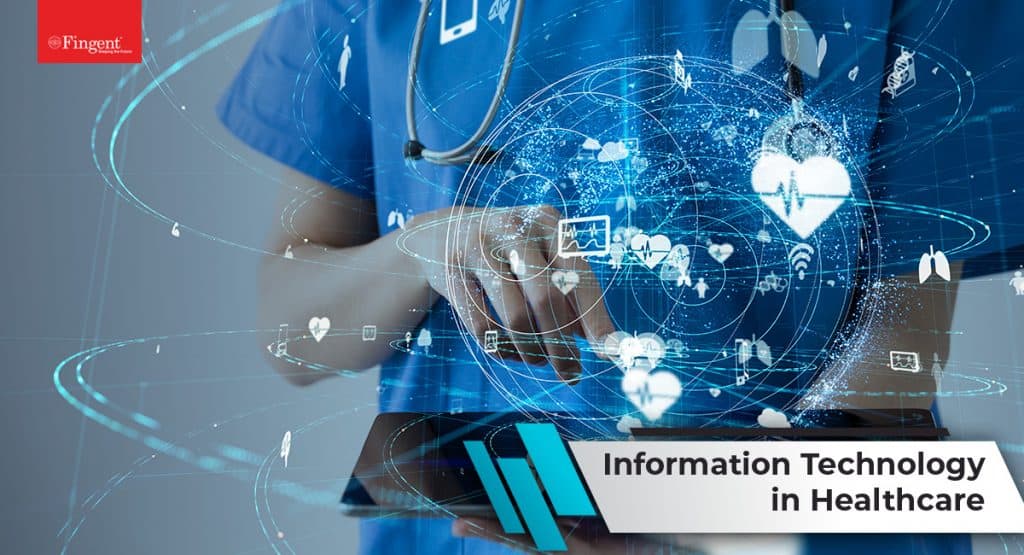
The healthcare industry is constantly striving to enhance patient outcomes, reduce operating costs, and address unforeseen medical crises effectively. The US-based Digital Twin Consortium observes that digital twin technology has the potential to improve patient turnaround, reduce patient wait times, optimize equipment utilization, cut staffing expenses, and minimize bed shortages. It helps personalize medicines based on real-time data and improve the operational efficiency and performance of healthcare organizations by identifying workflow bottlenecks and scheduling optimization.
Top 5 Applications of Digital Twin in Healthcare
Digital twins allow the creation of handy virtual models and medical simulations based on the data gathered from wearable devices, patient records, drugs and pharmaceutical companies, device manufacturers, and other healthcare departments. This helps streamline the overall clinical and caregiving processes. Listed here are the top five applications of medical digital twins:
1. Customize treatments and drug administration
Digital twins allow physicians, hospitals, and clinics to deliver patient-centric care by leveraging precision medicine. Data stored in healthcare mobile apps, medical software, wearables, fitness trackers, and other medical devices can be captured into digital twins which enables doctors and front-line health workers to address patients with persistent or critical conditions. For example, combining AI-powered anatomical analysis with the virtual model of a patient’s heart helps understand the progression of heart diseases over time. It enables medical researchers to identify how the patient will respond to new drugs, treatments, or surgical intercessions. Digital twin experiments are also conducted to analyze the progression of neurogenerative ailments such as Alzheimer’s and Parkinson’s.
2. Advance surgical procedure planning
Digital twin technology enables brain and heart surgeons to run virtual simulations of surgical procedures prior to executing complex surgeries. Testing pre-operative and post-operative surgical procedures and outcomes on a digital replica of human body parts reduces the risk of hampering human health. Advanced, patient-specific computational models of human organs help plan and augment complex surgical interventions with improved precision and care.
Read more: How Virtual Reality Benefits Autistic Patients
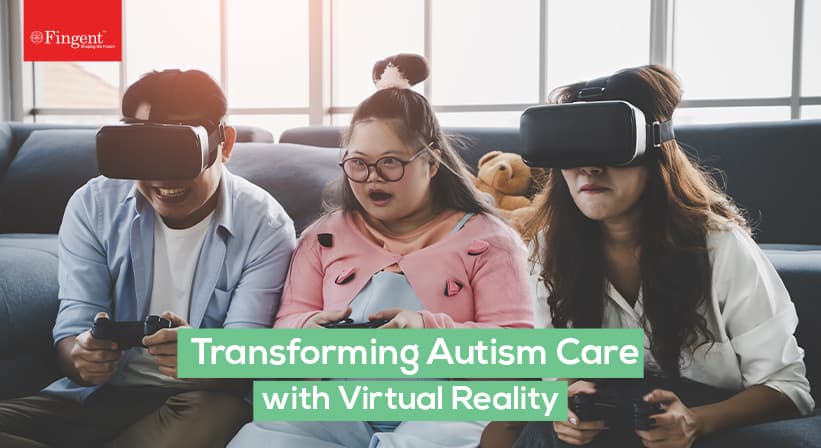
3. Enhance caregivers’ efficiency and experience
Digital twins support caregivers to gain a consolidated view of patient data scattered across various medical applications, physicians, and specialists. Technologies like Natural Language Processing (NLP) help infer the data and summarize the medical history of each patient. Capturing patient-specific information onto your medical dashboard throws better light into the context of each patient. This improves your clinical decision-making ability.
Digital twin model of a hospital allows you to measure the impact of organizational changes. For instance, you can use the virtual model to test new operational strategies, care delivery programs, staffing rotation, appointment scheduling, hospital bed facilities, surgical schedules, and so on. This helps redesign your organization’s workflow, improve coordination among various departments, and reduce the treatment window.
Case Study: How Fingent’s healthcare technology solution helped improve collaboration between doctors, patients, and caregivers
4. Test new medical devices and drugs
Federal drug regulators such as the United States Food and Drug Administration (FDA) agency as well as the European Medicines Agency (EMA) propose using AI algorithms to determine the safety and effectiveness of pilot drugs. Digital twins can simulate the health traits of a larger number of patients which helps analyze how a drug’s usage will impact a wider population. Using several inclusion and exclusion paradigms, AI helps pace up drug trials by identifying the willingness and availability of patients. Digital twins can also mitigate the harmful impact of experimental drugs and reduce the number of patients who need to undergo real-world testing.
It takes more than $2 billion to manufacture and launch a new drug into the market. Trial phase alone costs heavily and over 90% of treatments fail during this period. Capitalizing on technologies like machine learning and computational modeling helps expedite the early stages of drug design, development, and safety evaluation. Digital twins integrate the test data across various samples to give a holistic picture of the drug’s effect on patients.
5. Improve supply chain flexibility
The first wave of the COVID-19 pandemic weakened our supply chains due to the lockdowns and transportation bans across various countries. This resulted in the shortage of essential healthcare supplies. Digital twins allow healthcare organizations to create robust contingency plans to address such unpredicted events, increase bed capacity, manage emergencies during shutdowns or shortages, offer remote patient care, and design and construct new medical facilities to reach out to more patients. Hospitals, labs, and healthcare establishments can remodel their supply chain relationships to create alternative plans, improve collaboration with suppliers, and team up with authorities to plan and negotiate.
Read more: Why is it better to outsource custom healthcare software development
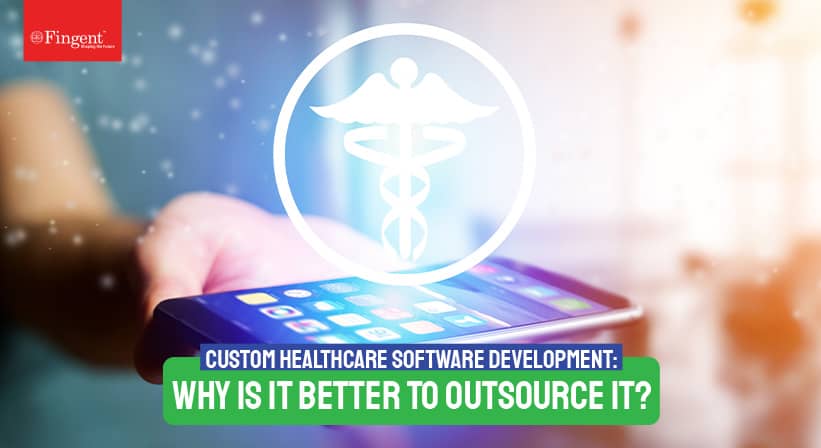
Make The Most of Digital Twins with Fingent
Healthcare application development experts at Fingent help you overcome the hurdles that defer digital twin adoption such as data gathering, quality of clinical trial datasets, and information security and privacy. We develop custom healthcare apps leveraging technologies such as VR, AI, ML, and IoT that enable you to virtually test innovations and deliver exceptional patient care. These solutions can be tailored to optimize both your clinical and operational functions. For instance, we help you develop virtual simulators for ACLS (Advanced Cardiac Life Support System), accident trauma care standard operating procedure, an orthopedic or cardiac surgical procedure involving complex tools, and Neo-natal Resuscitation Simulator (GOLDEN MINUTE PROTOCOL).
Read more: How Virtual Reality Improves the Standards of Medical Education and Training
Besides VR, healthcare providers can benefit from various customizable solutions such as connected healthcare apps powered by IoT, integrated medical dashboard software, remote patient monitoring systems, and healthcare analytics applications. Improve your organization’s technology ecosystem with Fingent. Contact us to design digital twins and drive innovation.
Stay up to date on what's new

Featured Blogs
Stay up to date on
what's new



Talk To Our Experts
Healthcare is a vast customer service industry that is trying to improve patient health and healthcare processes. This patient-centric approach has evolved, especially after the COVID-19 pandemic. Virtual consultations and telemedicine practices have increased rapidly in the last two years. A report by PwC on global healthcare trends reports, 91% of consumers who used virtual clinical care in the past would do so in the future. Additionally, the Center for Disease Control and Prevention (CDC) shows an increase of 154% in the use of telehealth in March 2020 compared to the same period in 2019.
As patients are demanding much more streamlined and seamless access to healthcare, most organizations are trying to get rid of old conventional systems that limit performance. Today, patients seek personalized treatment. That’s where custom-made software comes into the picture.
Read more: Is Augmented Reality the future of HealthCare?
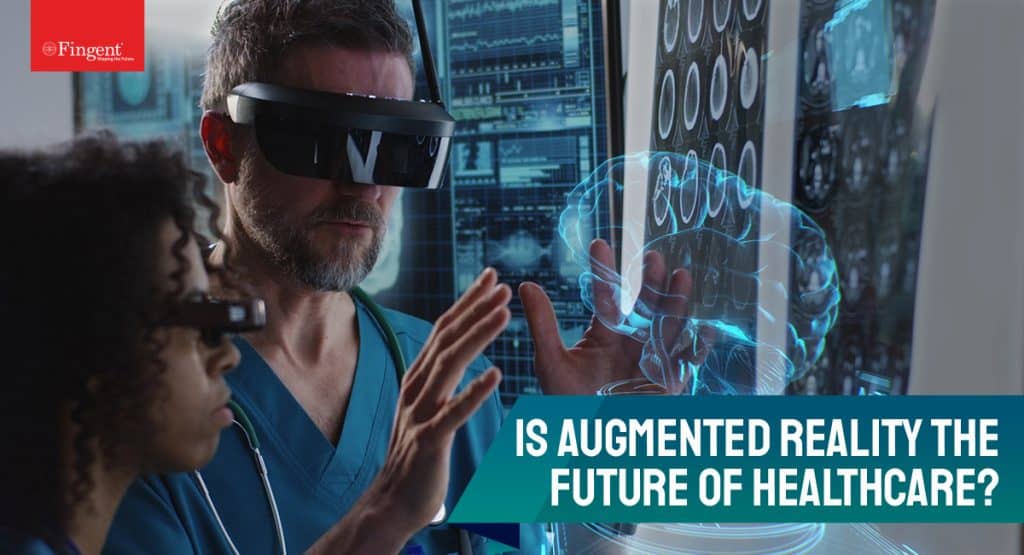
Custom software is built to cater to the specific needs of the users. They intend to solve unique challenges. Emerging technologies have proved an immense benefit to the healthcare sector. When these technologies are integrated together they bring various benefits to doctors, patients, medical organizations, and the entire healthcare industry.
A few commonly known custom software solutions for healthcare are:
- Electronic Health Record (EHR)
- Hospital Management Systems
- Telemedicine
- Electronic Prescriptions System
- Appointment Scheduling
- Medical Equipment Management
- Medical Research
In this blog, we will further dig into how custom-made software provides superior customer service in the healthcare industry.
How is custom-made software boosting patient care?
1. Improved personalized patient services
Data-driven patient services are adding value to patient care. Data that is recorded, transmitted, and easily available is helping improve doctor-patient interactions. This allows healthcare organizations to personalize their patient services. Additionally, they can manage their interactions with thousands of patients without the need for administrative overhead.
2. Improved communication and organization
With custom-made software, different departments can communicate easily and improve the organizational culture of hospitals. Departments can share information without the need for manual entries and documentation. Also, patients can visit any department without carrying any document along as the information is already available electronically with the hospital.
3. Improved growth
Custom software digitally transforms the traditional medical record maintenance system and makes it paper-free. The Electronic Medical Record (EMR) can store data of thousands of patients securely host on the cloud. This decreases operating costs and eventually increases the ROI. Thus, custom software plays a pivotal role in improving business growth.
4. Integrated system
Custom-made software integrates different workflows that your organization requires daily. Custom software can synchronize several simple and complex processes such as finance, OPD, human resources, etc., in a single place. This helps reduce workplace stress and allows healthcare providers to invest more time in patient care.
Read more: Choosing Prescriptive Analytics over Predictive Analytics in Healthcare!
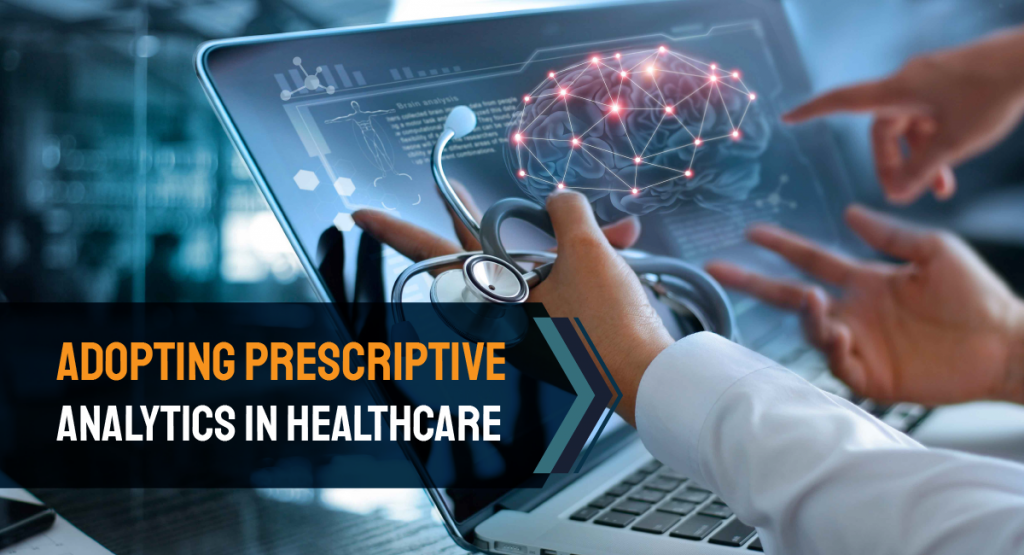
Why is Customer Service a priority in Healthcare?
Health issues can be stressful emotionally as well as financially. When engaging with healthcare organizations, most patients expect personal care in addition to the treatment. Thus, the more personalized the care, treatment, and engagement with patients, the more likely it is to have happy customers.
How can custom-made software improve customer service?
1. Scheduling appointments
Using custom-made software, healthcare organizations can improve the scheduling experience by reducing wait times and the time taken to capture patient data. It can also help provide appointment confirmations and reminders via text message or email prior to the appointment.
Booking appointments is the most elementary feature in most healthcare apps.
2. Service delivery experience
Custom-made software can provide healthcare practitioners with complete access to patient records health history along with diagnostic tools and systems. In addition, healthcare practitioners can use digital tools to record treatment notes, patient recommendations, queries, and diagnosis notes while interacting with the patient. This helps provide patients with tailor-made experiences and improve customer service in general.
3. Post-appointment follow-up
Healthcare practitioners can use auto-trigger feedback forms that allow patients to rate their experience, which will enable them to measure patient satisfaction. Doing so will improve customer engagement and foster a long-term relationship with patients.
Read more: Custom Healthcare Software Development: Why Is It Better To Outsource It?

How Fingent can help your healthcare organization improve patient care?
Whether your healthcare business is small or big, a custom healthcare solution is the only way to move ahead in the game and ensure quality and effective patient care services. Fingent is a trusted partner and has been proving efficiency in custom-made healthcare solutions for years. Here are some of Fingent’s success stories in enabling healthcare organizations to drive unique and streamlined customer experiences.
#1 A Custom Solution To Simplify Patient Care
Miscommunication between doctors, patients, and healthcare providers can turn life-threatening. That’s why it’s highly imperative that communications are streamlined. Although this itself could be a challenge!
That’s why Fingent helped develop a simplified patient-care solution, Encourage, that promotes effective communications amongst the various players in the healthcare ecosystem. A doctor can keep track of patients’ progress, assign tasks, and set reminders and care plans, as part of the patients’ profile. Patients can also get involved and also add selected caretakers to the care plan. The solution not just helps streamline communication, but also helps improve patient engagement and allows to better educate patients and families on various treatments.
Know more on how Encourage turned an apt custom software solution for simplified patient care!
#2 Healthcare Service Platform
Providing the right healthcare guidance, knowledge, or tools to the patients or their families can be time-consuming. Plus, it’s also imperative that the information shared is confidential and extremely accurate.
To streamline and solve such challenges in patient engagement and collaboration, Fingent helped develop an online platform, NovitaCare, that helps engage patients, providers, researchers, and NGOs to collaborate online and facilitate quality care. The solution equips many early-stage healthcare start-ups to streamline their workflow, improve patient-caregiver and caregiver-patient interactions, eliminate wastage, improve accountability and raise patient care quality.
Learn more on how NovitaCare turned into a top-notch solution for healthcare patient management.
#3 Improving Visibility on Hospital Performances with Data Visualization
It is vital for patients to choose the best hospitals and healthcare centers based on their performances. NHS wanted to create a platform that streamlined this search with metrics that compared hospital performances to showcase the best and those with good success rates.
Fingent designed an application that utilized data inputs from NHS to create interactive visuals and graphs to compare hospital performances. The solution drills down the minute of details to analyze hospitals across various parameters to deliver financial, clinical, and geographical insights, highlighting key performance issues and indicators.
Read more on how NHS used Fingent’s data visualization capabilities to identify the best-performing healthcare centers.
#4 Cutting-edge Web Application for Health Insurance Decision-makers
In partnership with Casenet’s ASG, Fingent helped simplify TruCare Insights, a nimble PHM platform that aids healthcare payer organizations.
Casenet’s Advanced solution group wanted to create an application that provides action-oriented dashboards and management ease to healthcare payer organizations. The platform, TrueCare did not provide integrated reporting options, and maintaining reports and reconciling them required excessive manual labor. Thus, Fingent helped the team build a highly scalable web application, with best-in-class UI/UX design, to seamlessly integrate the complex workflows of TrueCare, and manage 10 mn+ data records using custom filters.
Know more on how helping Casenet simplify their platform TrueCare streamlined their workflow and management!
Using our proven strategies, Fingent has helped many healthcare organizations and non-profit healthcare sectors boost performance and bring innovative ideas to life. Our experts help provide external perspective, agility, and understanding needed for real innovations. With us, you can get access to skilled software development professionals and all the ancillary roles to develop technology solutions that are apt and unique to your challenges. Additionally, we provide the best-in-class support during and after custom software development.
To know more about how we can help you deploy the top technologies for improved healthcare services, connect with us today!
Stay up to date on what's new

Featured Blogs
Stay up to date on
what's new



Talk To Our Experts
According to a study by Autism Speak and the CDC, 1 in 59 children in the U.S has autism. While children and adults with autism have verbal, behavioral, and social skills challenges, they also have unique identities and preferences like anyone else. Some people with autism who are minimally verbal or non-verbal use iPad and voice apps to speak for them. Also, they use iPads as an educational tool every day. Tech like the iPad has led both parents and the autism support team to embrace virtual reality. Today, more and more counselors, therapists, teachers, and parents are leveraging Virtual Reality as a therapy tool to help autistic people to communicate and connect with the world around them better. For example, the Center for BrainHealth and the Child Study Center at Yale University’s School of Medicine used VR to help young adults with autism achieve economic and social independence.
Additionally, the technology is helping non-autistic people clear some misconceptions about autism and understand the reality of living with the condition.
While VR has been gaining attention recently, it was used for therapy as early as 1996. The studies in the 90s were promising, but VR was expensive, and headsets were bulky and uncomfortable, which was a major hurdle for people with sensory disorders. All these issues prevented VR therapies from becoming a viable option for people with autism.
Today, VR technology is not just cheap and accessible. The VR headsets are lighter and more comfortable too. So, researchers are studying the potential of Virtual Reality as a treatment tool for autism more than ever before.
Read more: How Virtual Reality Improves the Standards of Medical Education and Training
Uses of VR in Autism Care
1. VR Apps
At the University of Haifa, researchers have created a VR app that trains kids to cross a road safely. This app simulates what it would be like to cross the road with cars and traffic lights. The interesting part of the app is that it allows kids to practice crossing the street without the real-world consequence of being hit by a car. Kids can practice each step as long they need and reduce the risk while learning a new skill.
Floreo is a VR learning and social skills app that therapists, parents, schools can use and support staff to help kids with autism. This app helps children learn social skills like reciprocity and planning for unexpected situations through social stories. It also helps them detach emotionally with interactive virtual sensory tools. The app can be installed on a smartphone or tablet with a Google Cardboard headset. It comes with a good data capture system making it easier to track individual goals.
2. VR Games
Teachers recommend that parents play games with autistic kids to help them learn to mimic skills like sharing and back and forth communication. Generally, autistic people can find it difficult to make eye contact or have a two-way conversation between people. This struggle can unintentionally push others away. VR games such as Playground, Astropolis, and non-VR software such as SketchUp use the VR motivator as both play and learning opportunities.
- Astropolis puts players in a spaceship to fly, using resources to ensure space colonies are happy and functioning. Players can collect and manage the resources and defend the colony as well.
- Maritime Defender is yet another mini-game they can practice letting pilots through a wormhole or not allowing them to pass through. This helps with decision-making and control-based skills.
- Stellar Prospector and Starjack improve perception and thinking, and autistic people are encouraged to play this game.
- Sketchup, a 3D architectural and designing software, helps draft objects and structures. It gives autistic kids and adults a creative outlet not found in any school setting.
Other VR games such as Vivecraft, Tilt Brush, and Medium also help build things in 3-D and 360-degrees without the real-world challenges like running out of supplies or messing up, or having to start fresh. These games do not get autistic people direct jobs in coding, architecture, art, and design, but ignite their passion and encourage them to pursue a career in those fields.
3. Tackling Phobias
Virtual reality can tackle phobias in autistic kids, such as fear of classrooms, balloons, animals, and public transport. Cognitive Behavioural Therapy(CBT), along with visualization and imagination, can combat the effects of these phobias.
Using VR, participants enter a “Blue Room” and navigate through a 360-degrees video projection of a scene usually accompanied by audio that replicates the object or experience they fear. Here the participants do not have to wear goggles as the therapist manipulates the scene using iPad controls. Also, the therapist uses CBT techniques to calm the participants when exposed to their phobias.
Read more: Top AR & VR Trends to Transform Ecommerce in 2022!
Conclusion
The VR technology enables therapists, medical professionals, and parents to leverage it to help people with autism learn differently and improve their communication skills.
At Fingent, we have the expertise to create apps, games, and software that can help autistic people connect and communicate with people around them. For more information, reach out to our team.
Stay up to date on what's new

Featured Blogs
Stay up to date on
what's new



Talk To Our Experts
With the ongoing COVID-19 pandemic, the healthcare industry is spiraling at an unexpected speed and is continuously inventing healthcare solutions to drive streamlined operations. Medical organizations are now largely depending on custom healthcare software solutions to maintain medical history, electronic health records, patient’s personal information, and other medical data to provide better patient care and health services. This blog will take you through why your healthcare organization needs to invest in custom healthcare software development, and how it’s beneficial to outsource it!
What is custom healthcare software development?
Today, healthcare is driven by technological innovations such as big data, electronic patient record systems, interoperability, and machine learning. The need for this is to provide better patient experiences and improve health outcomes. To achieve this, there is a need for professionally designed tools and solutions that can help healthcare providers to deliver patient-first and cost-effective care.
Custom healthcare software development is the process of creating web or mobile apps for medical professionals so they can interact with patients better, use medical data analytics, and access patient health records.
Examples of how custom software development has transformed the healthcare industry include;
- Tools such as Hospital Management Systems (HMS) or Hospital Information System (HIS) are comprehensive integrated solutions that handle different aspects of hospital or clinic’s workflow efficiently.
- An Electronic Health Record (EHR) system collects a patient’s data and history and stores it in a digital format that makes sharing across different healthcare systems easy.
- Mobile apps and wearable devices are serving several health aspects.
Read more: Augmented Reality in Healthcare: The Industry Future!
Key benefits of custom healthcare software
1. Tailor-made solution
Software solutions built specifically catering to your organizational needs help deliver better customer services. Especially when it concerns providing patient-care services, it is always recommended to invest in custom or tailormade solutions. An off-the-shelf or packaged solution, in comparison to a custom software solution, may or may not be able to meet your organization’s requirements or even work well within a specific type of facility. A custom software solution will help solve your business-specific complexes and will help meet your business goals.
2. Streamline processes
Undoubtedly, technology enables us to get our work done efficiently and more accurately. A custom software solution can have a far-reaching impact. It frees your staff to allow them to focus on patient care.
3. Personalized care
Today, patients want to understand their health on their own and expect personalized services from their healthcare provider. This is why there is an increasing demand for telemedicine, at-home testing kits, and health apps.
4. Enhanced security
Custom healthcare software solutions are built in compliance with the industry standards and guarantee that personal data stays secure and confidential. An app must comply with Open Web Application Security Project standards and other certifications, to be approved.
When it comes to creating custom healthcare software, organizations can;
- Leverage any open-source platform to create a customizable solution without the need for coding
- Outsource the entire custom software development process to a reliable development agency.
Read more: Why Healthcare Prefers Prescriptive Analytics Over Predictive Analytics
Advantages of outsourcing healthcare software development
1. Economical and effective
By outsourcing to a third-party offshore company, you can save a lot of costs. It helps save largely on the cost of developing application infrastructure, recruiting professionals, training the recruits, and deployment and pre-installation set-up costs. Most service providers use advanced technology that would fit your budget.
2. Experienced team
While some projects require a large pool of software developers others may not. In such cases, it may be difficult to hire software developers and then relieve them after completing the work as it involves a huge cost to hire, set up infrastructure, and team. Therefore, outsourcing custom healthcare software development gives you the leeway to scale up or down resources as per your project requirements.
3. Agile and scalable solutions
In-house healthcare developers are usually burdened with several other tasks which cause them to lose focus and compromise on the delivery of the app. Collaborating with a third-party agency will provide you with the flexibility of managing the resources and whenever you need them. This will also help you include scalable software developers to build an app that is more agile and consistent.
4. Quick time to market
Outsourcing the custom development task will give you access to experts from healthcare domains to develop your applications. This will ensure your app be superior,well-grained, and reach the market faster so patients can be treated faster.
5. Increased productivity
As offshore developers are qualified and talented enough to develop your app, you won’t have to burden them with briefings and preparations. This will allow you to focus on improving the critical and core healthcare services of your organization thus improving the results significantly.
Read more: Healthcare Analytics Reaches New Heights with SAP HANA
Cost of outsourcing custom healthcare software development
When it comes to the healthcare industry, the average cost of an experienced developer is not cheap. That is why 59% of global companies outsource software development. While the costs vary from country to country, you will still save about 40-70% of the total costs. For example, the average hourly cost for a software developer in the US is $65–$130 per hour while the hourly cost of offshore developers in Asia and Africa is $20–45.
Why choose Fingent?
If you need custom healthcare software for your organization, Fingent is your trusted partner.
- We have a pool of experienced and skilled developers who can help you identify the right solution for your business complexities.
- Our agile methodology of development ensures client involvement at every stage so that the solution is scalable, cost-effective, as well as caters to specific client requirements.
- We offer transparent offshore development services in terms of overhead costs and recruitment fees.
In the wake of the COVID-19 pandemic, the need for custom healthcare software development cannot be denied. Our developers are not only affordable but can add much value in terms of talent and skill to your organization. Connect with our experts today!
Stay up to date on what's new

Featured Blogs
Stay up to date on
what's new












